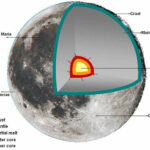NASA continues to pave the way for the future of space exploration by investing in revolutionary technologies that could transform its upcoming missions. From groundbreaking space telescopes to advanced propulsion systems, the space agency is venturing into new frontiers with the aim of pushing the boundaries of what’s possible in space. NASA’s commitment to exploring innovative technologies underscores its dedication to pushing the boundaries of space exploration. Let’s delve into the six pioneering technologies selected for further study in NASA’s latest initiative.

1. The Fluidic Telescope (FLUTE)
Led by Edward Balaban at NASA’s Ames Research Center, the FLUTE study is exploring the development of a fluidic space telescope concept. Unlike traditional solid mirror telescopes, FLUTE envisions using fluidic shaping of ionic liquids to create massive mirrors. This innovative approach could enable NASA to observe faint celestial objects such as young galaxies and Earth-like exoplanets with unprecedented clarity and detail.
2. Pulsed Plasma Rocket (PPR)
Brianna Clements at Howe Industries is spearheading the PPR study, which aims to revolutionize space propulsion technology. By harnessing thrust from packets of plasma generated by nuclear fission, the PPR system could significantly reduce travel time for manned missions to Mars and beyond. With its potential for high thrust and large specific impulse, this propulsion system promises to usher in a new era of fast and efficient space travel.
3. The Great Observatory For Long Wavelengths (GO-LoW)
Mary Knapp at MIT is leading the GO-LoW study, which focuses on developing a mega-constellation low-frequency radio telescope. This innovative telescope, composed of thousands of autonomous SmallSats, could revolutionize our understanding of the cosmos by observing low-frequency signals from objects such as exoplanets and the cosmic dark ages. Its unique design overcomes traditional feasibility challenges associated with radio telescopes, opening up new avenues for astronomical research.
4. Radioisotope Thermoradiative Cell Power Generator
Stephen Polly at the Rochester Institute of Technology is heading the study on Radioisotope Thermoradiative Cell Power Generators. These advanced power sources, inspired by reverse solar cells, aim to provide highly efficient and compact energy solutions for small spacecraft. By converting heat from radioisotopes into electricity, these generators could enable missions to distant destinations such as the outer planets and polar lunar craters.
5. Flexible Levitation On A Track (FLOAT)
Ethan Schaler at NASA’s Jet Propulsion Laboratory is leading the FLOAT study, which focuses on developing a robotic lunar railway system. This innovative system, based on flexible levitation on track technology, could provide reliable payload transport on the Moon’s surface, supporting the operations of future lunar bases. With its ability to transport heavy payloads efficiently and adapt to changing base needs, FLOAT holds the potential to revolutionize lunar exploration.
6. ScienceCraft for Outer Planet Exploration (SCOPE)
Mahmooda Sultana at NASA’s Goddard Space Flight Center is spearheading the SCOPE study, which explores a new type of spacecraft equipped with imagers on its solar sails. This innovative design, known as ScienceCraft, combines science instruments with spacecraft, enabling cheaper and lighter missions to the outer solar system. With its potential for rapid data collection and travel across the solar system, SCOPE promises to enhance our understanding of distant worlds like Neptune and Uranus.
NASA’s commitment to exploring innovative technologies underscores its dedication to pushing the boundaries of space exploration. By investing in these groundbreaking studies, NASA is laying the foundation for future missions that could revolutionize our understanding of the universe and pave the way for humanity’s continued exploration of space.
For further information, visit: https://www.slashgear.com/1583425/innovative-new-technologies-nasa-is-exploring/?zsource=msnsyndicated
Read our previous articles: https://scitechupdate.com/index.php/researchers-develop-biocomputer-by-linking-16-brain-like-structures-grown-from-human-cells/
https://scitechupdate.com/index.php/breakthrough-material-nasas-grx-810-could-change-everything
Breakthrough Material: NASA’s GRX-810 Could Change Everything (scitechupdate.com)
https://scitechupdate.com/index.php/big-achievement-first-ever-capture-of-x-ray-image-of-single-atom
https://scitechupdate.com/index.php/super-material-could-have-more-potential-than-graphene
https://scitechupdate.com/index.php/two-new-covid-variants-called-flirt-in-the-united-states
First 5G-enabled Surgery performed by Doctor (scitechupdate.com)
Hitchhiking Aliens: New Research into Panspermia (scitechupdate.com)
Two new COVID variants, called ‘FLiRT’ in the United States (scitechupdate.com)
Sex and Gender Studies: Unlocking Equality and Social Justice (scitechupdate.com)
https://scitechupdate.com/index.php/social-media-negative-effects-teenagers-brain
https://scitechupdate.com/index.php/japans-co2-absorbing-concrete-home
https://scitechupdate.com/index.php/zinc-should-get-from-food-not-supplements
https://scitechupdate.com/index.php/three-nobel-prizes-try-to-cover-all-of-science
https://scitechupdate.com/index.php/the-most-populated-cities-in-the-world
https://scitechupdate.com/index.php/aromas-and-odors-decoding-the-insect-brains-interpretation
https://scitechupdate.com/index.php/pig-kidney-xenotransplantation-is-thriving-in-human-body
https://scitechupdate.com/index.php/huaweis-new-smartphone-challenger-to-apple
https://scitechupdate.com/index.php/israel-advances-cancer-treatment-with-genomic-profiling/https://scitechupdate.com/index.php/stomach-cancer-causes-signs-and-treatment/
https://scitechupdate.com/index.php/james-webb-telescope-captures-newborn-sun-like-star
https://scitechupdate.com/index.php/oxygen-28-unstable-magic-isotope-that-defies-expectations

